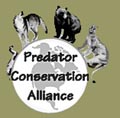Opinion Editorial, November 6, 2001
Contact: David Gaillard, Forest Associate (406) 587-3389.
Lynx Deserve Our Best Efforts
Through the early 1970's, as many as several hundred lynx were trapped each year in Montana. Today, the best estimates are that not many more than several hundred lynx still survive in Montana, scattered among increasingly isolated populations. This, and similar declines in the Northwest, lake states, and Northeast led to the protection of the lynx as a federally threatened species in Spring, 2000. Now, the Forest Service and Bureau of Land Management are proposing protections for the lynx across the northern Rockies region, through a region-wide amendment to land management plans. The lynx amendment takes an important first step toward restoring the lynx to the northern Rockies, and it warrants our support.
Some say there never have been many lynx in Montana and never will be. Historic trapping data indicate otherwise, and there is no reason that we cannot restore lynx numbers and distribution, at least to levels of just a few decades ago.
Some say that having lynx in Canada is good enough. Few Montanans say that we don't need grizzly bears in Glacier, Yellowstone and other wild places in Montana simply because they still survive in Canada. While the lynx is reclusive and less famous than the grizzly, it is a vital, beautiful component of our natural heritage that is our duty to protect and restore.
Some say we don't know enough about lynx to start protecting them. On the contrary, our past neglect of the lynx is exactly what led to its current decline, and we no longer have the luxury to wait until all of the answers are in before taking action. We know enough about the lynx and what it needs to address fundamental problems. Comparing areas where lynx still survive with areas where lynx used to live and provides strong evidence of what sorts of activities are harmful to the lynx They include:
- Heavy trapping pressure (less of an issue today);
- Excessive motorized access (roads and trails provide access for trappers, snowmobiles and human disturbance overall);
- Unnaturally homogenous forests, due to industrial logging and fire suppression; and
- Fragmentation of lynx habitat by highways and developments that prevent lynx movement, thereby shrinking and isolating remaining areas of habitat available to lynx.
Some say the lynx amendment represents another scheme to "lock up" public lands. No one is proposing this. The truth is, to restore the lynx, we need to change some existing uses of areas important to the lynx, such as:
- Maintain sufficient habitat for snowshoe hares, the main prey of lynx;
- Maintain sufficient mature and old-growth forest for lynx to den and raise their young;
- Protect areas important for lynx security, especially females with kittens, from disturbance from snowmobiles and other winter recreationists;
- Prescribe fire where feasible to restore and maintain a healthy, diverse forest mosaic lynx need; and
- Ensure that lynx and other wildlife can travel over, under, or across our highways and neighboring developments so that populations do not become isolated and go extinct.
Some may say these measures cost money and are inconvenient. The money and effort expended for the lynx should prove to be a great investment. These reforms will benefit many other wildlife species as well (bears, wolverines, elk, deer), and it is far more cost-effective to implement protections now for the lynx than to delay until there are further declines, and more costly and difficult "emergency room" tactics are needed.
Few of us, even diehards who spend every available moment in Montana's forests and mountains, will be lucky enough to see a lynx in the wild. But to see its big, round tracks in the deep snow, to see the extra wariness in its prey, and to simply know that lynx are out there are reason enough to do our best to protect and restore this majestic, graceful wildcat. Written comments on the lynx amendment will be accepted through December 10; contact the Forest Service or Predator Conservation Alliance for the address or more information (www.predatorconservation.org).
David Gaillard is Program Associate for Predator Conservation Alliance in Bozeman, Montana. The Alliance is a non-profit conservation group working to improve coexistence between people and predatory wildlife in the U.S. northern Rockies and High Plains.
lynx | forest | press releases
|
